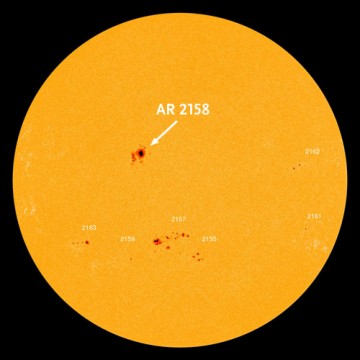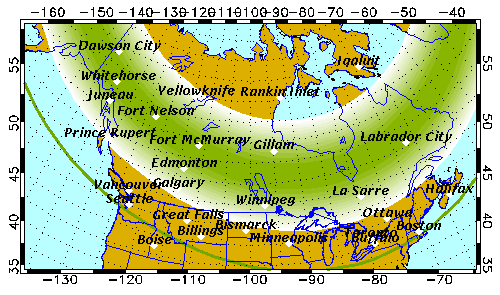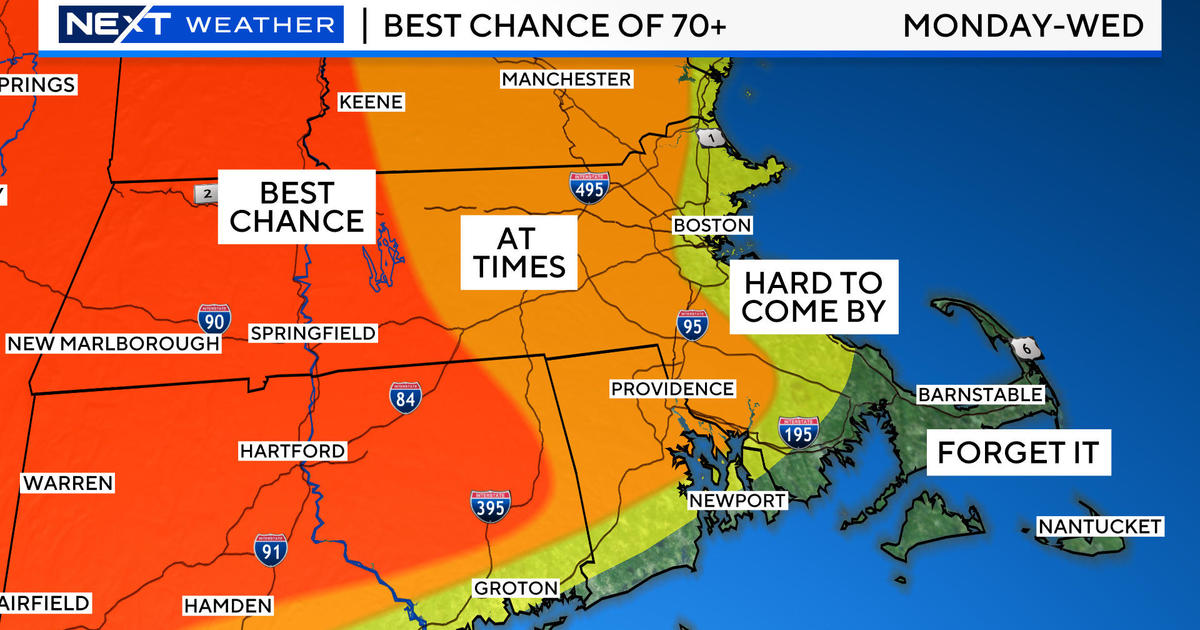Geomagnetic Storm Watch - Aurora Potential!
The sun has been throwing temper tantrums this week, and pretty spectacular ones at that.
Activity from sunspot AR2158 has resulted in 2 large flares, one on Monday and a powerful X-class flare (X1.6 to be exact) on Wednesday.
This wasn't the strongest flare of the year - that honor goes to one on February 24th which was a monstrous X4.9, but X-class flares are at the highest end of the scale and Wednesday's was pointed right toward Earth.
It quickly lead to some high-frequency radio disruption as a blast of radio waves rocketed off the surface of the sun. And for some head shaking reference, the sunspot that unleashed these flares is about 5 times the width of the Earth.
Courtesy: NASA
Flares come with all sorts of different radiation (gamma, x-ray, etc) and other components. One of those is a CME - a coronal mass ejection. Wednesday's CME initially left the surface of the sun traveling at about 2,000 miles per second - or about the distance from Boston to Denver per second! Space never ceases to amaze. According to NASA's official definition, CME's are "...huge bubbles of gas threaded with magnetic field lines that are ejected from the Sun over the course of several hours." Think of it as a magnetic shock-wave pushing through space.
How does this cause auroras? Particles strike the Earth's atmosphere at blazing speed, exciting atoms along their way. Way up in the atmosphere, nitrogen and oxygen gas are some of the more abundant molecules around. When excited, their energy increases and they emit light as a consequence. The color (wavelength) of light, or the aurora as we see it, depends on which molecules are being excited (nitrogen, oxygen, etc). Each emits a different wavelength. And as you have noticed, this process tends to take place close to the poles, where the Earth's magnetic field lines converge.
Yes, there can be more detrimental consequences to a CME collision. Magnetic disturbances can cause compasses to fail, wreak havoc on power grids, overload electrical systems, disrupt satellite communications, and render your GPS useless. At this time, NOAA isn't expecting a major impact of this nature. But no doubt about it - someday an extremely powerful CME will erupt from the sun and head our way. And when it does, we'll be in a world of hurt. It may not happen for hundreds or thousands of years - but when it does it could act like an EMP (electromagnetic pulse) and throw us right back into the stone age.
On that fuzzy note, here's the forecast from NOAA!
"G2 (Moderate) geomagnetic storms remain in the forecast for September 12th as a result of the coronal mass ejection (CME) associated with the R1 (Minor) solar flare observed on the 9th. The latest WSA-Enlil model run has the CME associated with yesterday's R3 (Strong) solar flare arriving mid to late day on that same day. A G3 (Strong) Geomagnetic Storm Watch has been issued for September 13th due to the combined influence of these two events."
Friday's aurora forecast from the Geophysical Institute - University of Alaska Fairbanks
Northern lights could be visible as far south as Iowa and Connecticut on Friday night - a show worth staying up for! The initial impact should come during the afternoon, so as soon as it's dark start looking up. While auroras can be visible anywhere in the sky, a good place to start would be looking north. If possible, get away from any ambient light. When you're near a city, all the street lights, airplanes, and other sources of light pollution can rob you of the show! Head to the country, a rural spot if you don't mind a road trip. Bring a mug of hot chocolate (it's going to be a very chilly night), a blanket, a camera, and enjoy!
At this time it looks like northern New England has the best shot, and viewing conditions will be excellent. Mainly clear skies, low humidity. I feel like that never happens when there's a celestial event planned for our area! And if this geomagnetic storm can really excite our atmosphere, perhaps we'll see it all the way down here in Massachusetts. Send in photos to weather@cbsboston.com if you spot the aurora borealis!
Aurora visible in Easton, ME on October 2nd, 2013. Photo courtesy: Paul Cyr






